16 Ideas to Borrow From Professional Kitchens
Restaurant kitchens are designed to function efficiently and safely. Why not adopt some of their tricks in your own home?
Janet Dunn
31 March 2017
Houzz Australia Contributor. Former NZ House&Garden writer and stylist, and avid interior design enthusiast. Ex-restaurateur and caterer, with a Professional Certificate in Gastronomy, University of Adelaide.
Houzz Australia Contributor. Former NZ House&Garden writer and stylist, and avid... More
Have you ever peeked into the engine room of a busy restaurant, with all its steam, smoke, clatter and buzz? Producing sometimes hundreds of dishes a day requires a kitchen that can take the pressure, facilitate speed and ensure the safety of those in its midst. So what are the secrets of a functional, commercial cook space, and how can we adapt some of them to our own busy kitchens?
1. Direct traffic
Commercial kitchen layouts are planned for accident-free traffic among multiple cooks. This is a prime consideration for domestic kitchens too, particularly if cooking is a shared activity. Easy movement around work zones is essential to avoid collisions when carrying hot, heavy or sharp items. A minimum aisle width should be about 3 feet, but squeeze what you can out of your space, going as wide as about 5 feet if possible.
Tip: Many restaurant kitchens are designed with a long counter top, known as the line, where several chefs can work side by side.
Commercial kitchen layouts are planned for accident-free traffic among multiple cooks. This is a prime consideration for domestic kitchens too, particularly if cooking is a shared activity. Easy movement around work zones is essential to avoid collisions when carrying hot, heavy or sharp items. A minimum aisle width should be about 3 feet, but squeeze what you can out of your space, going as wide as about 5 feet if possible.
Tip: Many restaurant kitchens are designed with a long counter top, known as the line, where several chefs can work side by side.
2. Keep it open
Commercial kitchens use open shelves for grab-and-go convenience. Sticky hands make a mess of cupboard doors and drawers, so open shelving for storing your most-used items is worth considering. Open shelves are also easier to clean than deep cupboards and drawers.
Hang your go-to utensils within easy reach for ultra-convenient cooking.
Commercial kitchens use open shelves for grab-and-go convenience. Sticky hands make a mess of cupboard doors and drawers, so open shelving for storing your most-used items is worth considering. Open shelves are also easier to clean than deep cupboards and drawers.
Hang your go-to utensils within easy reach for ultra-convenient cooking.
3. Get a leg up
Have you ever seen what’s behind and under a stove when it’s moved out of its spot? Many commercial ranges stand on short legs to allow complete sweeping and mopping underneath. This ensures that dropped food and spills can be cleaned up properly.
Have you ever seen what’s behind and under a stove when it’s moved out of its spot? Many commercial ranges stand on short legs to allow complete sweeping and mopping underneath. This ensures that dropped food and spills can be cleaned up properly.
4. Steel yourself
Commercial kitchens are stainless steel for good reason. Cookware taken straight from the oven can be plunked straight onto it without damaging the surface, and pastry can be rolled directly on it with no need for a board.
Like most other counter top materials, steel needs to be maintained with a wipe down –stainless steel cleaner does the job in an instant. Stainless steel is hygienic and practically indestructible, which is why it can be a bit pricey. Chopping on steel will blunt knives, though, so be sure to use cutting boards.
Commercial kitchens are stainless steel for good reason. Cookware taken straight from the oven can be plunked straight onto it without damaging the surface, and pastry can be rolled directly on it with no need for a board.
Like most other counter top materials, steel needs to be maintained with a wipe down –stainless steel cleaner does the job in an instant. Stainless steel is hygienic and practically indestructible, which is why it can be a bit pricey. Chopping on steel will blunt knives, though, so be sure to use cutting boards.
5. Tap into convenience
A tall, restaurant-style, high-pressure faucet with a long, flexible hose is worth its weight in chrome. It rinses food from dishes, cleans sinks and can be extended past the sink to fill large containers such as stockpots and buckets.
A tall, restaurant-style, high-pressure faucet with a long, flexible hose is worth its weight in chrome. It rinses food from dishes, cleans sinks and can be extended past the sink to fill large containers such as stockpots and buckets.
6. Whisk it away
Restaurant counter tops often have disposal holes with bins positioned beneath them so scraps can be swept straight into the trash without having to open a cupboard or lift a lid with dirty hands — highly convenient if you have the counter space. It can even look neat and stylish, like this chunky one made of wood.
Restaurant counter tops often have disposal holes with bins positioned beneath them so scraps can be swept straight into the trash without having to open a cupboard or lift a lid with dirty hands — highly convenient if you have the counter space. It can even look neat and stylish, like this chunky one made of wood.
7. Embrace boards
Wooden cutting boards have proven their value for longevity and hygiene. Oiling them isn’t necessary, but if you do, avoid vegetable oils, which can become rancid over time. Food-grade mineral oil for boards is available.
Garlic-flavoured chocolate mousse anyone? To avoid such flavour clashes, try to keep separate boards for different tasks: One for meat preparation, a “smelly” board for onions, chives and garlic and one for sweet tasks, such as chopping chocolate or slicing strawberries. Label them with a dot of coloured paint or an initial on the side.
Tip: Don’t chop raw meats and cooked meats on the same board, to avoid cross-contamination. Boards used for raw meat, especially poultry, should be promptly scrubbed with very hot soapy water.
Wooden cutting boards have proven their value for longevity and hygiene. Oiling them isn’t necessary, but if you do, avoid vegetable oils, which can become rancid over time. Food-grade mineral oil for boards is available.
Garlic-flavoured chocolate mousse anyone? To avoid such flavour clashes, try to keep separate boards for different tasks: One for meat preparation, a “smelly” board for onions, chives and garlic and one for sweet tasks, such as chopping chocolate or slicing strawberries. Label them with a dot of coloured paint or an initial on the side.
Tip: Don’t chop raw meats and cooked meats on the same board, to avoid cross-contamination. Boards used for raw meat, especially poultry, should be promptly scrubbed with very hot soapy water.
8. Get silicone
Picking up sizzling pans with a thin fabric oven mitt is asking for burns, as many mitts aren’t up to the job. Opt instead for silicone mitts that extend past the wrist. It’s not just the heat of a pan handle that burns, but splashes from boiling water, steam that billows out when you remove a pot lid, or the racks of a hot oven.
Gloves with fingers enable greater dexterity than mitts, and silicone withstands temperatures of 500 degrees Fahrenheit or more.
Picking up sizzling pans with a thin fabric oven mitt is asking for burns, as many mitts aren’t up to the job. Opt instead for silicone mitts that extend past the wrist. It’s not just the heat of a pan handle that burns, but splashes from boiling water, steam that billows out when you remove a pot lid, or the racks of a hot oven.
Gloves with fingers enable greater dexterity than mitts, and silicone withstands temperatures of 500 degrees Fahrenheit or more.
9. Splurge to save
Many appliances for the domestic cook have plastic parts and less-than-powerful motors, which means they under perform and don’t last very long. If you make pasta only twice a year, buy a basic pasta maker rather than a high-end one and put what you save into a durable, commercial-grade appliance you’ll use daily. Go to a commercial kitchen supply store or look for deals in secondhand equipment and utensils.
Many appliances for the domestic cook have plastic parts and less-than-powerful motors, which means they under perform and don’t last very long. If you make pasta only twice a year, buy a basic pasta maker rather than a high-end one and put what you save into a durable, commercial-grade appliance you’ll use daily. Go to a commercial kitchen supply store or look for deals in secondhand equipment and utensils.
10. Equip yourself
A restaurant’s batterie de cuisine is the range of cookware and utensils used as a chef’s artillery. Speed counts for chefs, so pans that go from stove to oven, with oven-proof handles, are a must; heavy-grade aluminum and cast iron are popular choices.
Copper also gets the vote of many chefs. It’s highly conductive, distributes the heat evenly and releases food particles quickly for cleaning. Copper for cooking is always lined with stainless steel to prevent heat-induced toxicity. A copper bowl for whisking egg whites is not lined; it gives more volume and a stable foam that’s harder to over beat. Just don’t use an unlined copper bowl to cook in.
A restaurant’s batterie de cuisine is the range of cookware and utensils used as a chef’s artillery. Speed counts for chefs, so pans that go from stove to oven, with oven-proof handles, are a must; heavy-grade aluminum and cast iron are popular choices.
Copper also gets the vote of many chefs. It’s highly conductive, distributes the heat evenly and releases food particles quickly for cleaning. Copper for cooking is always lined with stainless steel to prevent heat-induced toxicity. A copper bowl for whisking egg whites is not lined; it gives more volume and a stable foam that’s harder to over beat. Just don’t use an unlined copper bowl to cook in.
11. Treat your feet
It’s vital that high-traffic, commercial floors are non-slip and easy to clean. In domestic kitchens, cork and linoleum check these boxes and also absorb some impact underfoot. If you like the look of harder flooring materials, reduce leg fatigue by wearing well-padded shoes. Most restaurants stipulate that kitchen workers wear closed-toe shoes, because hot liquids and dropped knives play havoc with exposed feet.
Tip: Why do many chefs wear clogs? They support the arches, add height for reaching up and can be slipped off easily. Consider leaving a pair of orthopedically designed slip-on shoes in the kitchen for long cooking stints.
It’s vital that high-traffic, commercial floors are non-slip and easy to clean. In domestic kitchens, cork and linoleum check these boxes and also absorb some impact underfoot. If you like the look of harder flooring materials, reduce leg fatigue by wearing well-padded shoes. Most restaurants stipulate that kitchen workers wear closed-toe shoes, because hot liquids and dropped knives play havoc with exposed feet.
Tip: Why do many chefs wear clogs? They support the arches, add height for reaching up and can be slipped off easily. Consider leaving a pair of orthopedically designed slip-on shoes in the kitchen for long cooking stints.
12. Slice and dice safely
Do you marvel at the knife skills of TV chefs? It’s not just about showmanship — knife control is key to safety as well. Cooking schools sometimes offer knife classes, or you can check out online tutorials. Then practice on celery sticks or carrots until you’re TV-worthy.
Do you marvel at the knife skills of TV chefs? It’s not just about showmanship — knife control is key to safety as well. Cooking schools sometimes offer knife classes, or you can check out online tutorials. Then practice on celery sticks or carrots until you’re TV-worthy.
13. Be prepared
An essential part of restaurant food preparation is the mise en place — literally, “putting in place.” It’s the practice of measuring out and making ready all the ingredients before you start to cook. This practice prevents frequent trips to the fridge and cupboards during rush hour. Try this process before you tackle a tricky dish or complex meal — you’ll find it’s a great time and energy saver.
An essential part of restaurant food preparation is the mise en place — literally, “putting in place.” It’s the practice of measuring out and making ready all the ingredients before you start to cook. This practice prevents frequent trips to the fridge and cupboards during rush hour. Try this process before you tackle a tricky dish or complex meal — you’ll find it’s a great time and energy saver.
14. Scrub up
Cooking is a wonderfully tactile, hands-on pursuit, a bit like adult mud-pie making. But food-flaked hands can transfer bacteria, so wash your hands between messy jobs, especially when handling fresh meats and seafood, and keep hand wash or antibacterial wipes nearby.
Restaurants have separate hand-washing sinks and often use air dryers, but paper towels are a hygienic domestic solution. Remove jewellery when cooking, as ingrained food particles harbour germs — and ruin your bling.
Cooking is a wonderfully tactile, hands-on pursuit, a bit like adult mud-pie making. But food-flaked hands can transfer bacteria, so wash your hands between messy jobs, especially when handling fresh meats and seafood, and keep hand wash or antibacterial wipes nearby.
Restaurants have separate hand-washing sinks and often use air dryers, but paper towels are a hygienic domestic solution. Remove jewellery when cooking, as ingrained food particles harbour germs — and ruin your bling.
15. Chill out
Food safety regulations on temperature control in commercial cool rooms and fridges are pages-long. Food-safe home strategies are simple: Ensure that the temperature of your refrigerator is 41 degrees Fahrenheit or lower (check with a thermometer) and that the door isn’t opened more than necessary. Store cooked and raw foods separately, and always cover refrigerated food.
Food safety regulations on temperature control in commercial cool rooms and fridges are pages-long. Food-safe home strategies are simple: Ensure that the temperature of your refrigerator is 41 degrees Fahrenheit or lower (check with a thermometer) and that the door isn’t opened more than necessary. Store cooked and raw foods separately, and always cover refrigerated food.
16. Put first aid first
Kitchen accidents are common, with burns and cuts the most frequent. Keep first aid supplies close at hand, particularly sterile wound pads and dressings, bandages and antiseptic.
Read more:
5 Things to Know Before Installing a Modular Kitchen
Kitchens: 5 Biggest Problems Solved
Tell us:
Do you have any food safety or kitchen design tips that make your cooking life easier? Share them with us in the Comments.
Kitchen accidents are common, with burns and cuts the most frequent. Keep first aid supplies close at hand, particularly sterile wound pads and dressings, bandages and antiseptic.
Read more:
5 Things to Know Before Installing a Modular Kitchen
Kitchens: 5 Biggest Problems Solved
Tell us:
Do you have any food safety or kitchen design tips that make your cooking life easier? Share them with us in the Comments.
Related Stories
Kitchen Ideas
7 Essentials For a Successful Kitchen Renovation
Remodelling your kitchen? Updating cabinets, walls, backsplash, flooring, storage should be a must on your list
Full Story
Kitchen Ideas
10 Key Kitchen Dimensions You Need to Know
Here are key kitchen dimensions that will help you design like a pro
Full Story
Indian Homes
Renter's Dilemma: How to Update an Indian-Style Kitchen Design
Follow these simple, renter-friendly tips to update your space into a modern kitchen
Full Story
Kitchen storage
Say Hello to the Most Popular Types of Kitchen Wall Cabinets
Find out which kitchen wall cabinet style combines convenience and good looks, is easy to maintain and best suited for you
Full Story
Decorating Guides
Is an Open Kitchen Layout Right for Indian Homes?
Explore the strengths and shortcomings of an open kitchen design and find out whether it makes sense in your home
Full Story
Most Popular
What's the Best Material for Kitchen Cabinets?
Choices are aplenty when it comes to cabinet materials. Find the pros and cons of the top 5 available in the market today
Full Story
Lighting Ideas
How to Light Kitchen Counters
By David Warfel
Discover these 6 professional tips for lighting your countertops and other kitchen workspaces
Full Story
Kitchen storage
6 Must-Have Modular Kitchen Accessories
These accessories for modular kitchens are guaranteed to increase efficiency and storage
Full Story
Photo Books
23 Scandinavian Kitchens That Pack Extra Punch
Blonde timber, white details and pared-back designs are key Scandi kitchen looks
Full Story
Kitchen Ideas
Have an Open Kitchen That Can Be Closed Off Too
By Jennifer Ott
Get the best of both worlds with a kitchen that can hide or be in plain sight, thanks to doors, curtains and savvy design
Full Story

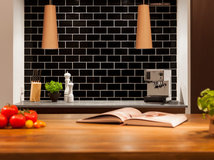
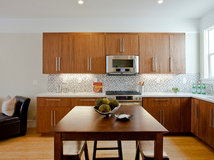
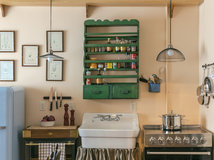

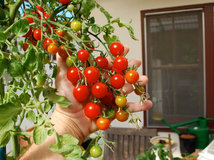
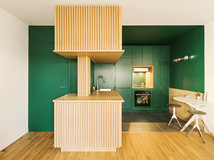
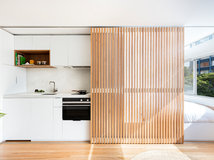
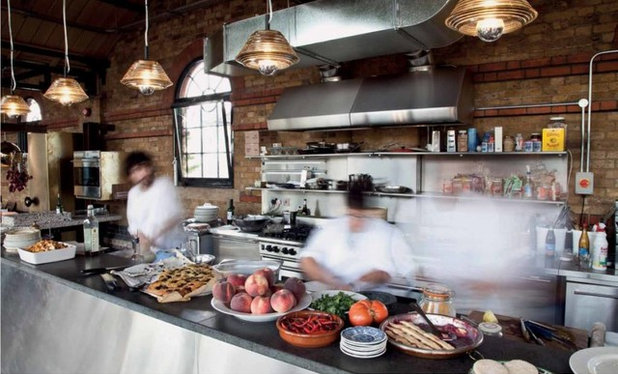
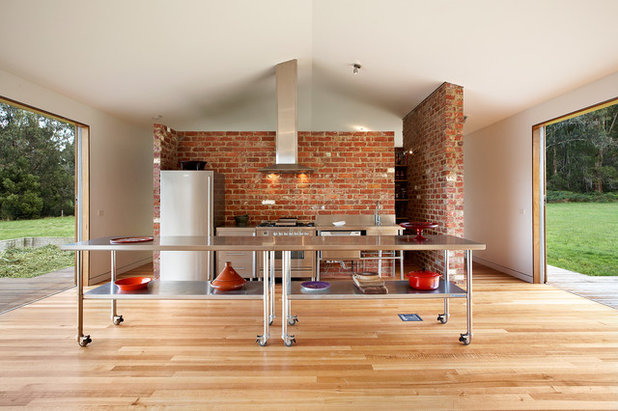
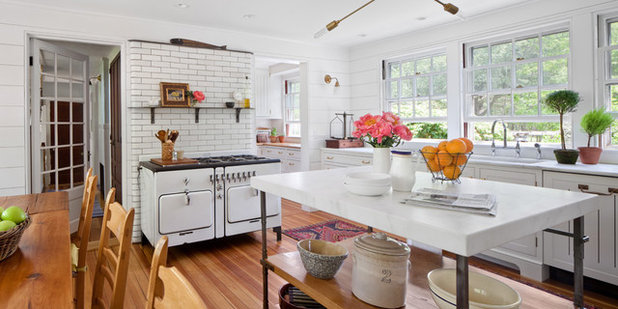
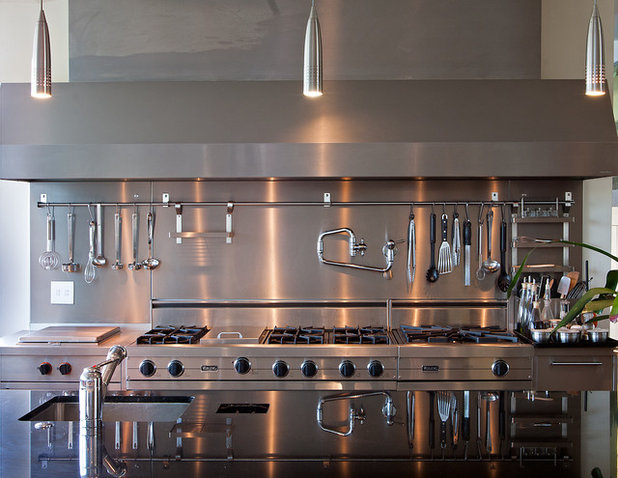
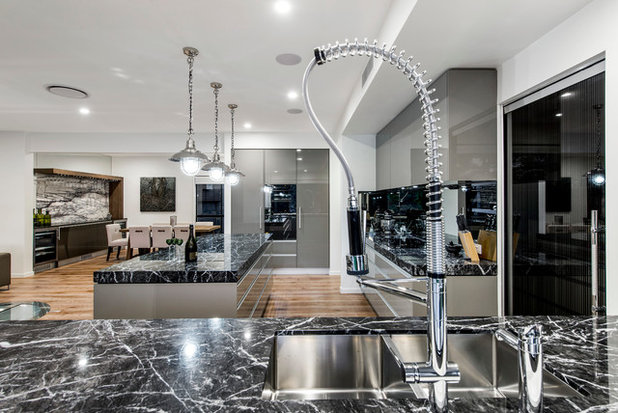
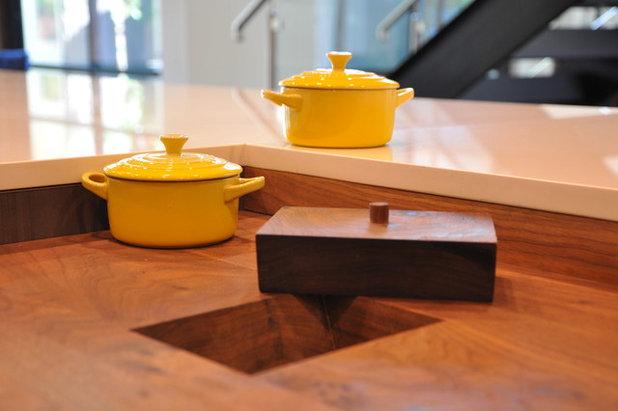
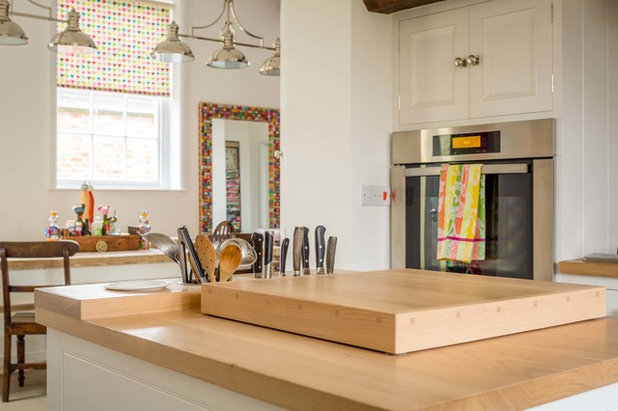
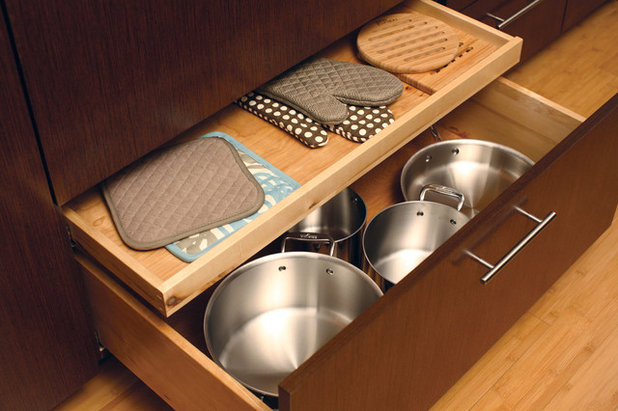
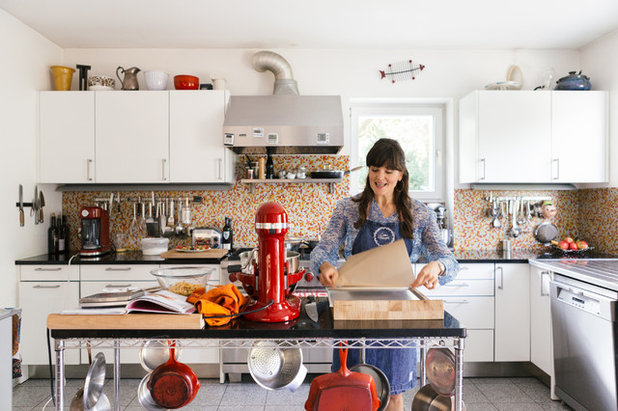
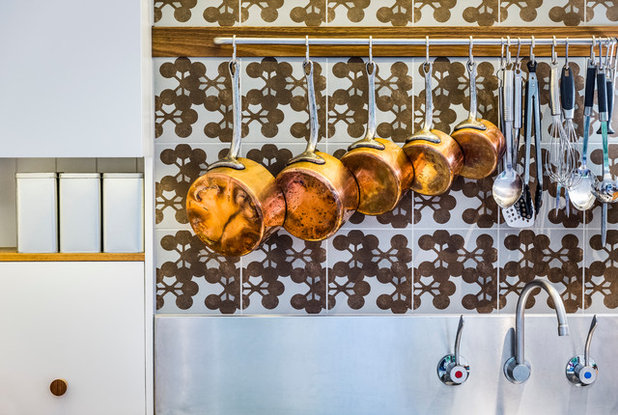
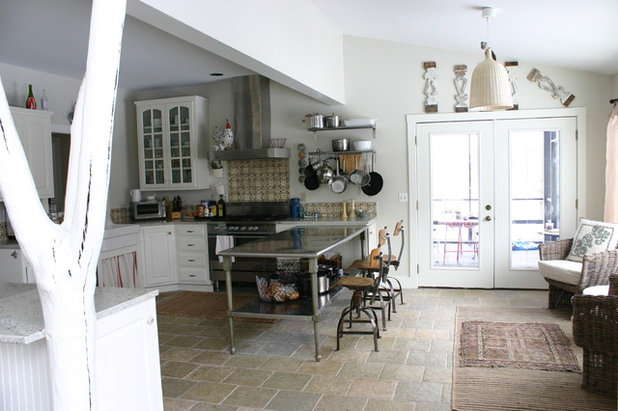
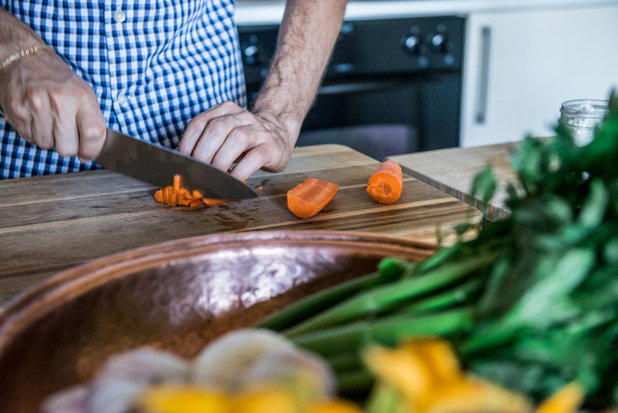
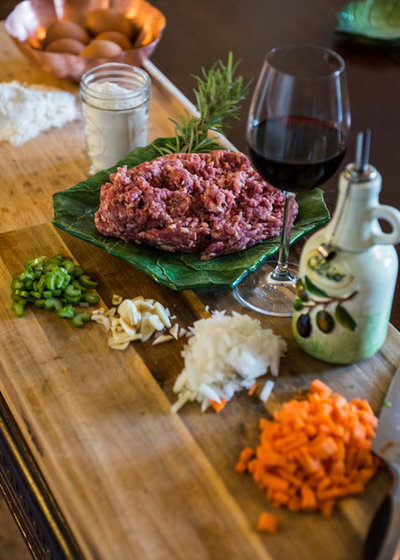
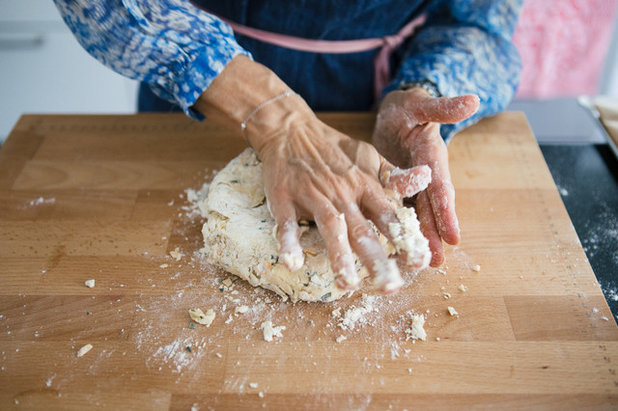

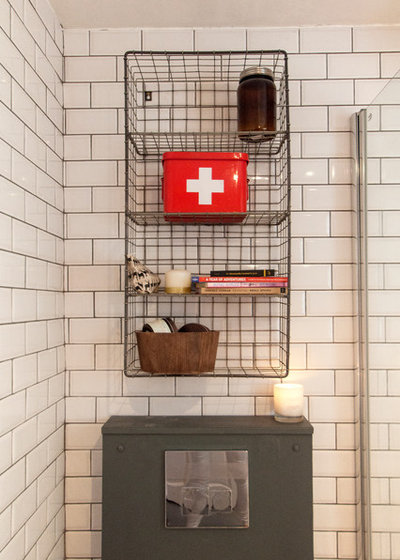


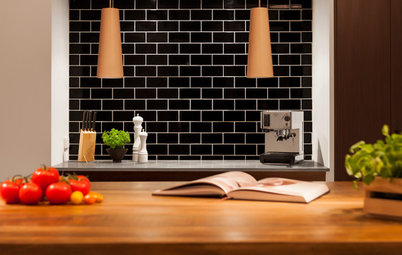
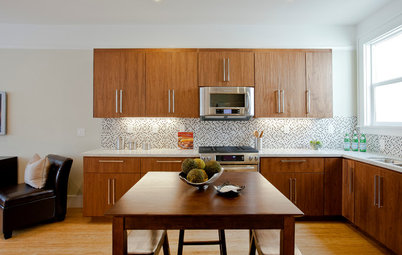
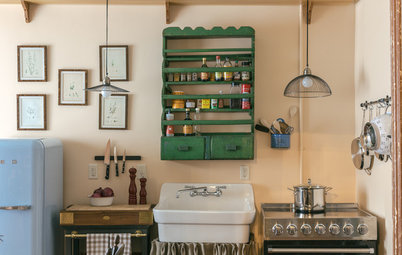
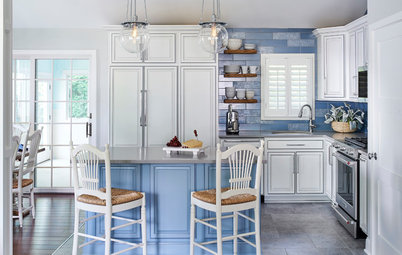
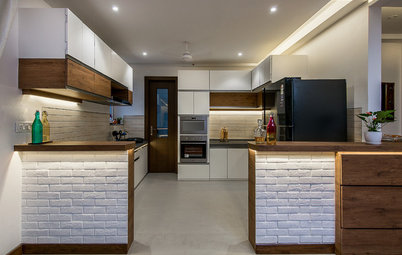
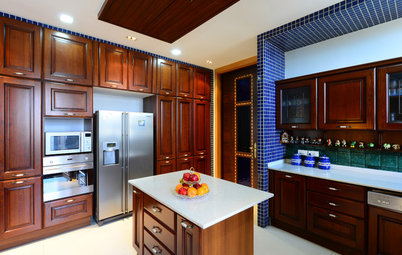

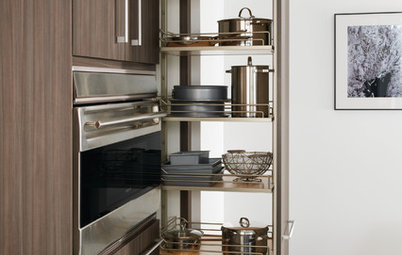
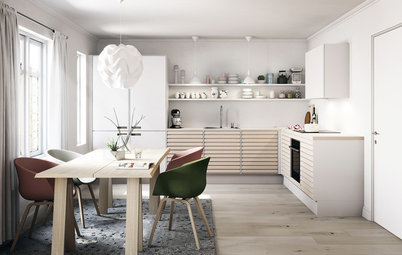
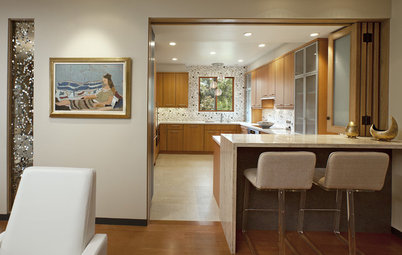
I suggest reading a recipe through, making sure you have everything you need before starting a project. Also, try to improvise or substitute when you don't. You just may "invent " something new and wonderful!
As to knives: keep them sharp and remember to clean the handles as well as the blades. Dry them before storing. Have fun in the kitchen!
Big fan of colorful plastic cutting boards, they are cheaper to replace than the wooden ones, they can go in the dishwasher or soak in a in hot soapy water with bleach in it if you are really paranoid about contamination. I use white for poultry, blue for stinky stuff or fish since it is rare that I cook fish, red for red meat, green for veggies and fruits and yellow for nuts. You can find them pretty cheap I think at Ikea my last batch were like 3 bucks for a good size. You can spend a little more on the ones with the rubber grip on the bottom, but I just stick them on a silicon trivet or wet the back of them which works for wooden cutting boards to keep them from sliding around also.
Also my grandparents always pointed out the things you never skimp on, cookware, knives, laundry detergent towels and sheets, I add to that paper towels and appliances both small and large, but the best quality you can afford, there are reasons why that cuisinart food processor costs double compared to the cheaper brands for same size and power, they are made to last and if a blade goes dull, it is easy to get a new one, Kitchen Aid mixers are almost bullet proof, the only thing that killed my last one was a roommate, took all the packing material out of the box to pack dishes in, and put the mixer in a weaker box, unfortunately it cracked the sidewalk not his foot.